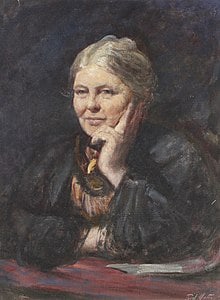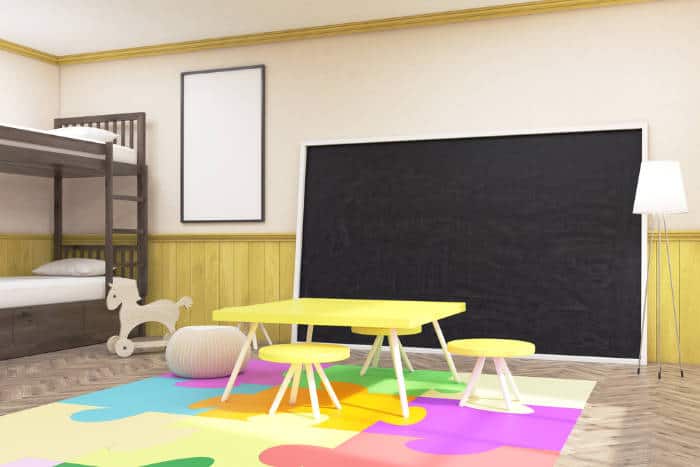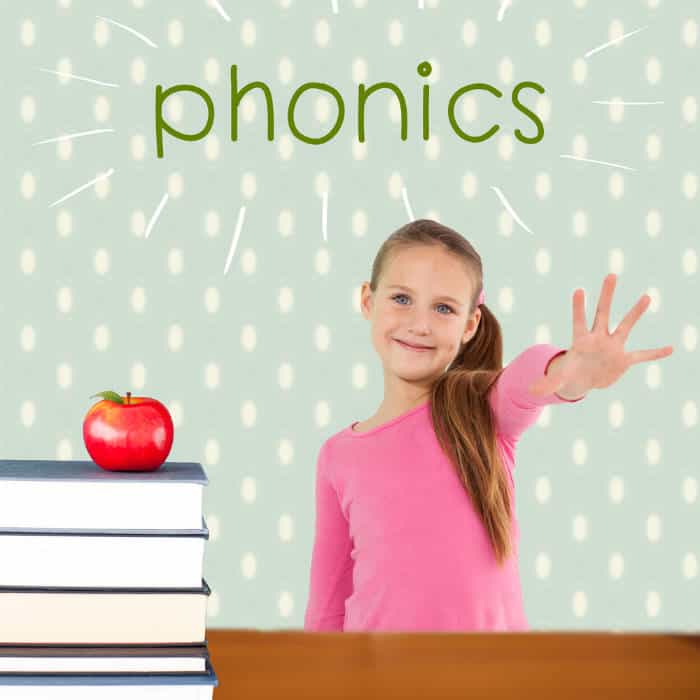When I first decided to homeschool, I only had one image in my head. And that was my family sitting around the table doing activities together, going on hikes in the forest, and learning math through lots of baking. I knew I only wanted to dedicate short windows of time to “school work” while the rest of our day was spent learning through life activities. I believed in letting my child lead the way (within reason) and dedicating a huge portion of our homeschool curriculum to reading.
However, when I did a quick Google search on curriculums, I was quickly overwhelmed by the sheer amount of options. I had no idea there were so many approaches to teaching. For a moment, I stared at the screen, frozen by options. I probably would have stared at that computer all day until I stumbled across a quiz that analyzed my preferences for schooling and broke down which approaches resonated most with me. And that’s how I found Charlotte Mason.
Who was Charlotte Mason?
Born in 1842, Charlotte was a British educator whose vision for learning included a liberal education for all. In this case, liberal meant a broad, all-encompassing curriculum for everyone. Charlotte proclaimed that when teaching, we must treat the child as a person and educate the “whole person.”

How did she approach teaching?
Charlotte employed a three-pronged approach to education stating, “Education is an Atmosphere, a Discipline, a Life.”
The atmosphere is essentially the home. Charlotte believed that children learn from their environment and the ideology/attitudes of their parents.
Discipline, in this case, means a routine of good habits. According to Charlotte, habits of good character make up a “third of your child’s education.”
The remaining third is academics, which Charlotte referred to as “Life.” She also believed that children should learn living education rather than “dry” facts.
In short, she relied heavily on books and narratives with rich language, forged from the passion of their creators. She favored great ideas that taught important lessons, rather than boring spelling lists. She also held time outdoors in high regard, along with the arts, and Christianity.
A tenant of Charlotte Mason’s approach is the use of “living books.” She believed these were books that introduced great ideas from great men with even greater minds. They also teach ideas by making an emotional connection. Living books are also well written and lack the fluff of most children’s books. Charlotte found it important not to dumb down the material, but rather treat the child as if they are capable of understanding without cutesy language.
If there’s one thing to take away from Charlotte Mason, it’s that she favored a reading-heavy approach with short windows of “work.”
What does that look like in my home?
Well, Charlotte Mason believed formal education should start around age 6. My daughter is almost 5, so we’re just dipping our toes into the water.
Our mornings consist of quiet time with the younger siblings, completing morning chores together, and then time outside. I wanted an approach that worked well with outdoor learning and Charlotte Mason’s “living” approach is perfect for that.
In the afternoon, we tackle lunch together. Sometimes that involves reading directions. On more involved math days, it’s measuring and counting ingredients that she gets to pour and stir herself.
After lunch, we spend 15-20 minutes reading, writing, and then some kind of science book. I like to break those activities up into 3 small chunks to hold her attention and allow her the freedom to move and fidget.
In the evening, we also tackle farm chores which include watering and feeding animals, as well as checking on cows and their calves. In a way, you could call our approach a Charlotte Mason farm school with an emphasis on outdoor playtime and practical life skills.
As she grows, we will implement more school time, but continue with short chunks of “work” time to break up the day.
Now, many curriculums and schedules call for school work in the morning and free afternoons. However, in our home, we have three children with the youngest being 15 months. Mornings just don’t work for us. We need that slow time to get everyone focused, and that’s just what works for us.
Available curriculums based on Charlotte Mason’s style
Now, even if you know that you want to try a Charlotte Mason approach, that doesn’t mean your research is done. There are many types of curriculums, each with a little variation on the living education method.
Some are Bible-based, others are heavier on classic literature, and many are nature-based. Check out this list of popular choices:
Ambleside Online
This is a free, online, and Bible-based homeschool curriculum
A Humble Place
This Bible-based curriculum features beautiful illustrations, art study, hymns, and lessons that go up to fifth-grade level.
Wildwood Curriculum
For a secular curriculum, this approach that is heavy on philosophy, world religions and cultures, music, art, literature, and experiential science could be a good choice.
Blossom and Root
This curriculum has options for preschool, kindergarten, and first-fourth grade. It’s a nature study-focused take on Charlotte Mason with math, science, reading, art, and music study. I actually chose this one for our family. It was affordable and easy to download and print myself. I found that it paired well with the farm setting we live in.
While these are inclusive examples, keep in mind you can always pick and choose from several curriculums to cultivate your perfect homeschool approach. Just be sure you are completing activities and lessons that are easy to report/put in a portfolio according to your state homeschool laws.







